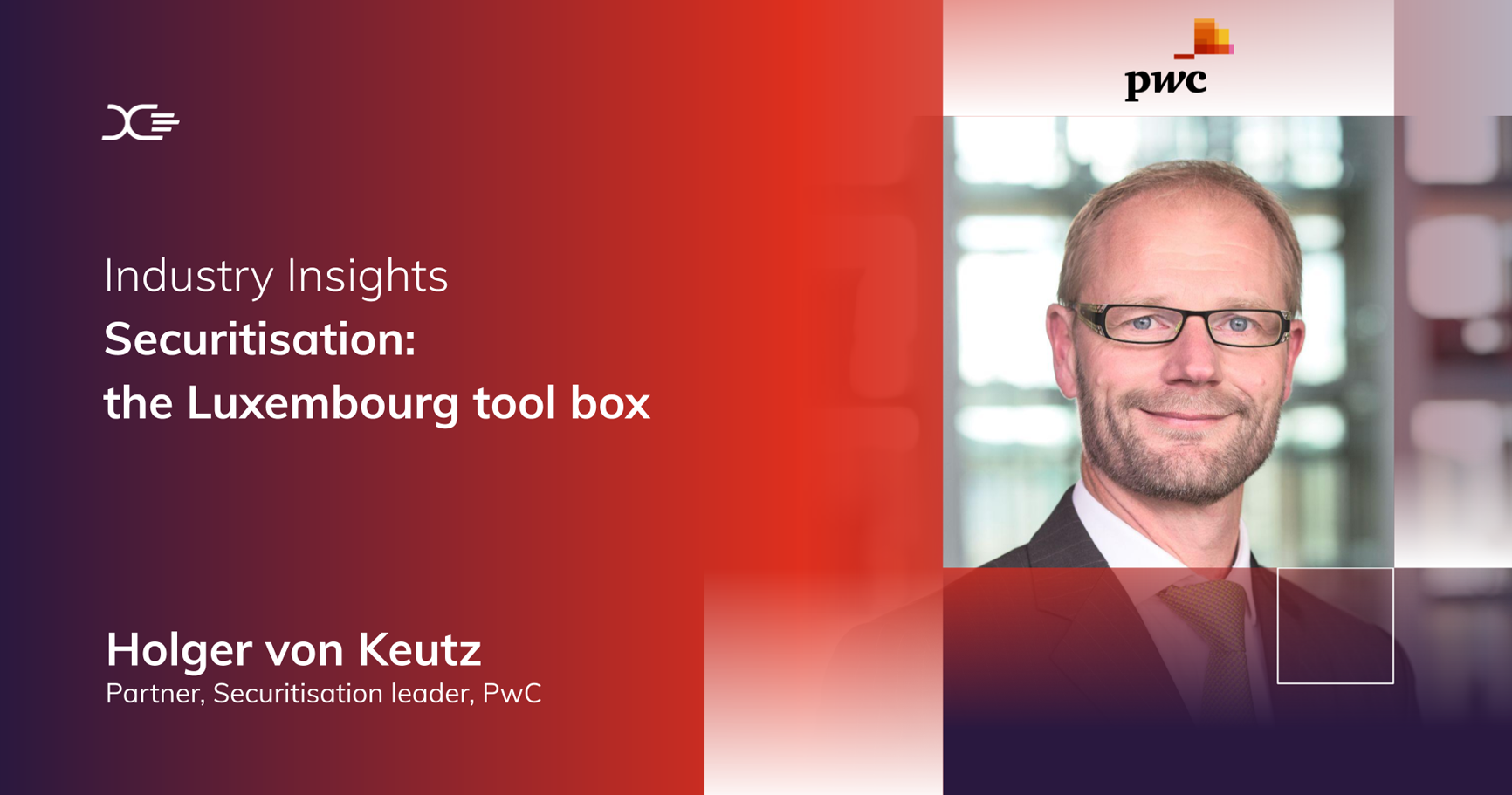Originator Spotlight/ Nestr Smart Finance

Jochen Weiss: Please could you introduce Nestr Smart Finance?
Mr. Gietelink: Nestr Smart Finance was founded in January 2016 by a group of seasoned professionals with specialist know-how in finance and the Dutch mortgage market. That includes our CEO, Lothar Kleinhaarhuis, who has over 20 years’ experience in the financial services and software development industry; our CCO, Arnold van Hengstum, who also has over 20 years’ experience in the financial services industry; Robin Pol, our COO, who formerly worked in the same role at one of the Netherland’s biggest mortgage servicers; and finally, me, the Chief Finance & Risk Officer (CFRO). I have an extensive track record in banking, including as Head of Structured Finance F&I at Rabobank and as a Board Member of Rabo Merchant Bank.
At Nestr, we focus on origination and servicing buy to let (BTL) financing for residential properties. More recently, we have moved into mixed-use real estate and are expanding into commercial BTL. We launched our first product in November 2019. In 2020 our BTL origination volume was around 225 million euros. Earlier this year, we reached the milestone of $500m EUR in total origination volume. We currently have 19 staff members in house. From 2021 through to 2025, we are targeting origination volumes of at least 350m per annum – but if we succeed in commercial real estate financing, that amount would be in excess of 500m euros annually.
Jochen Weiss: What are some of the features that distinguish you from the competition?
Mr. Gietelink: We were the first originator in the Netherlands to develop our own client-friendly broker portal for BTL loan applications. According to brokers, applying for a loan is three times more efficient with Nestr than with our peers. We have also taken the conscious decision to employ our own underwriters and our own compliance and sales teams. Many of our competitors primarily work with an outsourcing model, but we believe it’s key to have the expertise in house. Our IT is state of the art – we’re not really a FinTech, but we’re close to that.
In our market, we compete with other BTL lenders, including mainstream banks. We are somewhat stricter when it comes to approving applications and the general underwriting criteria.
“We look to compete on quality, underwriting speed, and reliability – we don’t compete on rates.”
With us, a client can get their loan approved in 1-2 weeks (once they provide complete information), which is up to 6 times quicker than at a mainstream bank.
Jochen Weiss: Please could you give us an overview of your market?
Mr. Gietelink: We are mainly active in the residential buy to let market, which in the Netherlands is about a 2.5 to 3bn-euro rental market annually. We are moving into the commercial buy to let market, which is significantly larger, though it is challenging to get a hard estimate on the BTL component within commercial realty – we estimate it to represent about 7.5bn euros gross rental income annually. With very few competitors in that specific space, we believe there is an opportunity to write good business from a credit perspective, and at an additional margin.
Looking at BTL investors, many residential BTL investors own multiple properties. 50% own four or fewer properties, while 18% own between 6 and 10 properties. Segmenting the residential market, around 3.35 million residential properties are rented – representing 43% of the total housing stock. Of these, the current market comprising BTL is made up of around 800,000 units.
Jochen Weiss: How would you characterise your approach to risk management? Please outline some of the main processes.
Mr. Gietelink: The underwriting process is obviously key to minimising credit risk and building a quality portfolio. It starts with brokers entering their data into our portal. We do a basic check and then send a provisional offer to clients typically within one hour. This offer will include the full information request – we only start with the real underwriting once this information is complete.
KYC and CDD [customer due diligence] investigations take place first. Sanctions, identity, PEP, credit and bankruptcy checks are done automatically via the Dutch Bureau of Credit Registration (BKR). The underwriter performs an additional internet search on e.g., bad press, and in the case of a legal entity, the underwriter also looks at the company structure. The UBOs are also checked. Enhanced due diligence by an investigator may also be carried out if deemed warranted.
On the credit side of the underwriting process, obviously the property is the key security. The main thing we check is a valuation report – the valuer is appointed by Nestr and must meet certain professional requirements. We have a standard instruction list for what the valuation report must include – amongst other things, the valuer must do a physical internal and external inspection, and we require reference properties. The underwriter checks the land registry purchase agreement and rental agreements as well as the licenses – such as whether there are any limitations on renting out the property. We also check the borrower’s income tax statements, annual accounts, and chamber of commerce documents.
The total checklist the underwriter needs to complete contains over 100 items. If it is approved, we send a binding offer to the client. We use a ‘six eyes’ principle – the first underwriter completes their checklist and signs off, then a second underwriter does a second underwriting and also completes the entire checklist, and then finally a director does a ‘sanity check’ and looks for any gaps missed by the underwriters.
Jochen Weiss: And what are some of the most important aspects to consider in relation to the security, especially any that are specific to buy to let?
Mr. Gietelink: Looking at the property and rental income, our main focus is liquidity. We only grant loans on objects located in the 40 largest cities in the Netherlands. The target is that the sale of the property can be achieved within nine months, and the property should be able to be rented out to new tenants within five months.
The LTV limit for CRE is 65%. We never finance more than the opinion value, which is the former foreclosure value. The legal term is 10 years, and there is a 2% redemption fee per annum on a linear basis. Once the loan has reached 50% LTV, the borrower can apply to switch to interest only payments.
For commercial real estate we exclude certain property types and business segments – that includes businesses involving gambling, coffee shops, and adult entertainment. Because of the pandemic we also exclude the most COVID-impacted sectors – such as the leisure and travel industries. Assets in pre-defined earthquake areas are also excluded.
Jochen Weiss: We see that interest rates on BTL mortgage loans are much higher than on owner-occupied real estate. Can you please explain why that is the case and why there are higher yields to be achieved by investors?
Mr Gietelink: The easiest answer is that where there is less competition there is a better price to be obtained. We believe that the risk profile is different, but not necessarily higher. For owner-occupied residential mortgages in the Netherlands it is mainly the income of the borrower that is assessed to determine credit risk. With BTL, you mainly look at the property, taking into account its value, and the income generated by the property. It’s a different risk profile; in the case of residential owner-occupied property, it’s up to 100% LTV financing, whereas in residential BTL you would have a maximum of 80% LTV, and in the case of commercial BTL, you would have a maximum LTV of around 65%. So, we’re talking about lower LTVs, but – depending on how you look at the risk – less certainty from an income perspective. Nevertheless, both in the residential BTL market and in the residential owner occupier markets, even during the credit crisis, losses have been minimal.
Jochen Weiss: When it comes to historical default rates, are there any specific numbers that come to mind?
Mr. Gietelink: For the residential owner occupied markets it’s just a couple of basis points, even during the crisis [in ‘08]. For the BTL market, there is less public data available. I can say that on the 500m euros we have originated to date, so far there have been zero credit losses. We have only had one loan that reached 30 days arrears. Losses to date have been zero basis points, but we’re obviously in a market where asset values are increasing.
Jochen Weiss: Please could you give us an update on the outlook for BTL in the Netherlands, given that municipalities in certain cities are looking to introduce restrictions on this activity?
Mr. Gietelink: Most of the larger cities in the Netherlands – including Utrecht, Amsterdam, The Hague – are looking to implement rules on new purchases for buy to let. Existing situations are not affected by the new rules. I would even go a step further and say that for existing properties, existing loans, there is a beneficial effect, because with those new restrictions; fewer rental properties are now available in the larger cities, and as a result, property prices increase.
Nevertheless, the implementation of the rules will differ from city to city – I believe that in Amsterdam the rules will only apply to properties with a value of under 500,000 euros, and for Amsterdam that is not a huge amount, so there will still be sufficient room to acquire properties for buy to let. Other municipalities like The Hague have done it slightly differently, by appointing certain areas where they want to restrict BTLs.
In summary, there will be an effect in certain areas and price categories for acquiring new buy to let properties will emerge. But we are also seeing people moving out of the big cities to the surrounding cities. For example, within 30km of Amsterdam, you have a good number of smaller cities and we are seeing a lot of movement on new BTL acquisitions in those neighbouring cities and municipalities.
Jochen Weiss: Thank you for your time Mr. Gietelink, you’ve mapped out for us Nestr’s business model and its approach to managing credit risk. Additionally your outlook for the buy to let market in the Netherlands and overview of the typical risk profile of a BTL borrower has provided valuable insights. We wish you all the best in 2022.
Follow CrossLend on LinkedIn for more Originator Spotlights, and our latest insights on private debt, finance and innovation.
Any views expressed in this interview are the personal views of the interviewee, and do not necessarily reflect the position of CrossLend or its employees. This article should not be construed as investment advice, or relied upon by anyone as legal, accounting, compliance or tax advice, or for any other purposes. This article is not to be construed, under any circumstances, by implication or otherwise, as an offer to sell, or a solicitation to buy securities.
Related articles
Securitisation: active management option to boost Luxembourg hub
The overhaul of Luxembourg’s securitisation laws introduced a number of changes, notably allowing for active management and a broader [...]
Originator Spotlight/Lenderwize
A fast-growing trade finance platform, Lenderwize specialises in invoice financing in the digital economy. Currently its platform provides its [...]
Digital lending emerges as an important sub-segment of private debt
Amid increasing breadth within the private debt asset class, specialised investors can allocate capital to sub segments in a bid [...]








